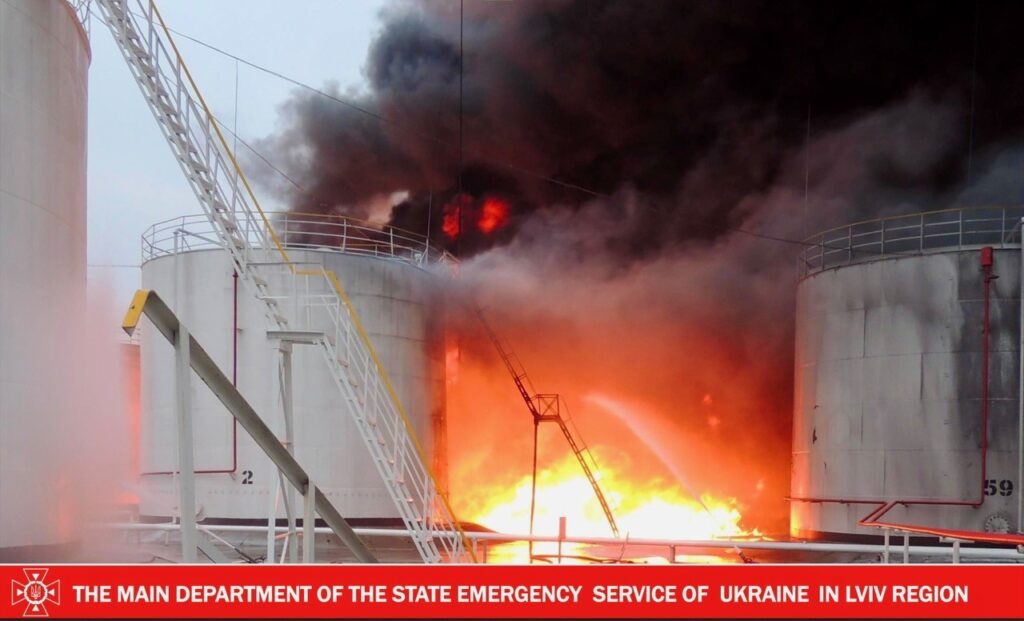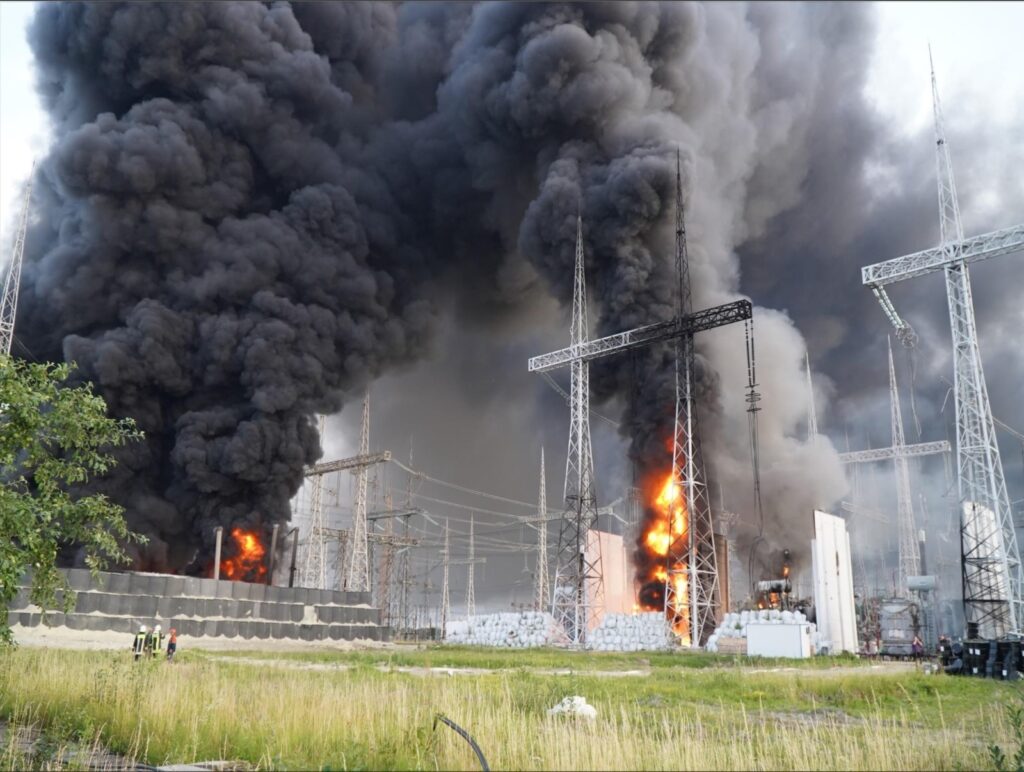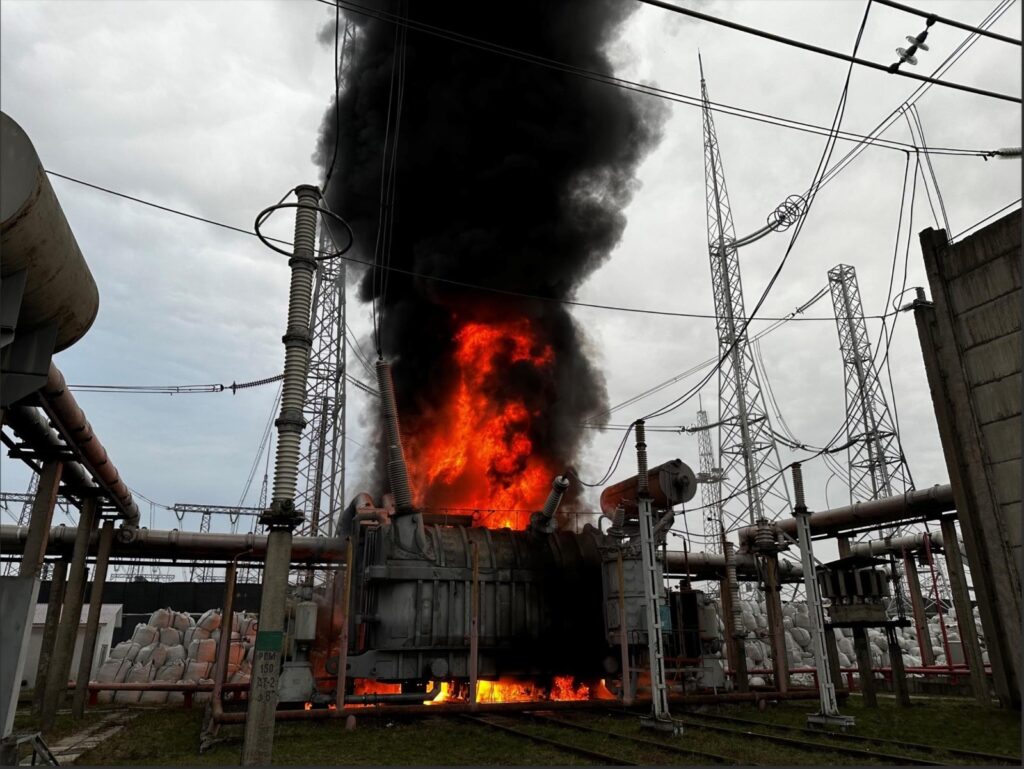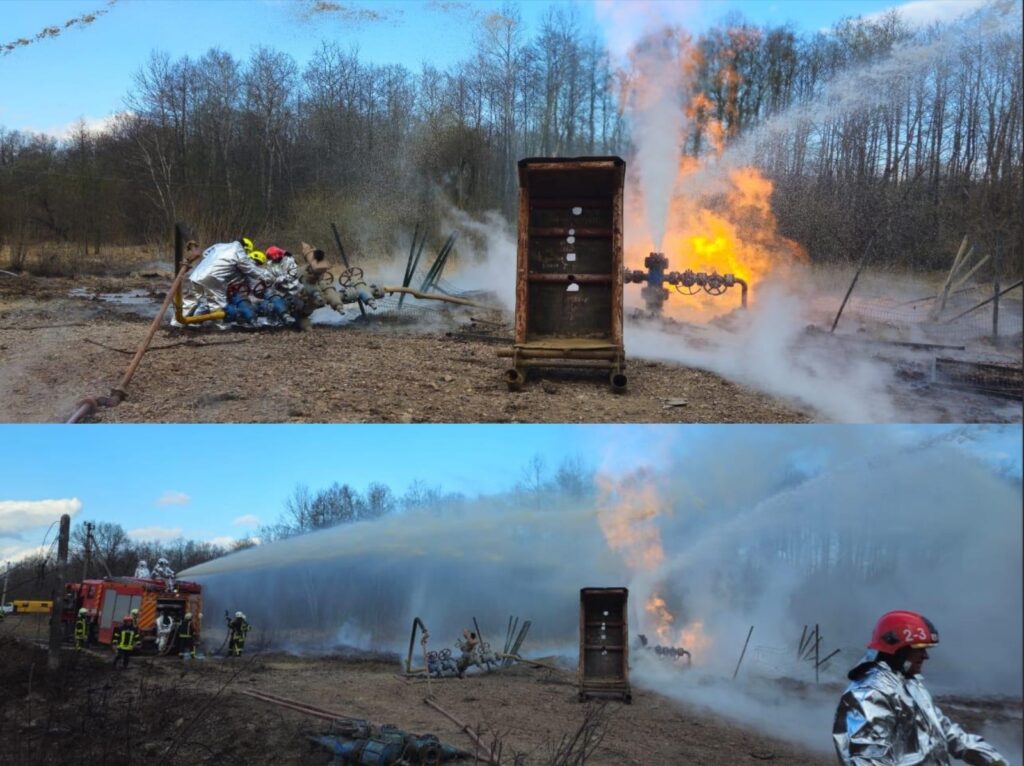Pentagram Advisory visited the Lviv region of Ukraine in July 2024 to gain first-hand knowledge from Ukrainian Government counterparts of the state of Ukraine’s critical infrastructure which has been degraded by Russian attacks for about 30 months.
This article is the first in a series that will offer an account of the destruction of Ukraine’s critical infrastructure, explore the consequences for Ukrainians as they go about their daily lives in a war zone, offer insights into how the government and people of Ukraine manage to keep some critical infrastructure services operating and offer some ‘lessons learned’ for Australia.

Russian attacks on Ukraine’s critical infrastructure commenced on the very first day of the current war, 24 February 2022, and continue. Attacks on critical infrastructure since February 2022 echo Russia’s 2014 attack on the Crimea and Donbass region of Ukraine.
Russia has used numerous methods of kinetic and non-kinetic attack to degrade Ukraine’s critical infrastructure. Electricity, gas, nuclear energy, water, airports, ports, hospitals, telecommunications, broadcasting, and freight infrastructure assets have been subject to attack by a variety of methods including physical, cyber, and insiders. Due to kinetic and cyber-attacks the resilience of the Ukraine’s domestic and internationally linked supply chain has been also regularly tested.
Ukraine’s electricity infrastructure is in significant deficient. Ukraine now has only a quarter of its production capacity compared to the electricity generation available before the Russian invasion.

By the end of May 2024 Ukraine estimated its electricity generation to be approximately 10 GW compared to about 40 GW before the war.1 At the time of writing this 10 GW was composed of around 7 GW nuclear electricity generation, about 1 GW from non-nuclear thermal units (mainly coal) and also hydroelectric plants. More than 2 GW comes from installed renewable sources, mainly photovoltaics.
The Russian strikes on Ukraine’s critical infrastructure follow a single algorithm in a systematic and methodical manner.2
Russia’s war aim is to completely shut down Ukraine’s electricity system: to destroy the integrity of entire system, cause a major systematic failure and achieve enduring blackout.
In October 2022, Russia began Operation ‘Destroy the Networks’. At first, the main targets were not electricity plants but the electricity substations, the destruction of which prevented the distribution and transmission of electricity to users.
Thanks to international support, Ukraine managed to rebuild most of the substations and some production capacity, allowing it to get through the winter of 2023-24 without significant disruptions to the electricity system. Additionally, Ukraine secured more than 100 substations with physical reinforcement protecting against drones or shrapnel. Ukraine was forced to apply regional power cuts/restrictions, known as load-shedding or rolling blackouts to prevent the electricity system from further damage in the wake of parts of it being disabled by Russian attack.3

In March 2024, Russia commenced Operation ‘Turn Off Ukraine’ which continues to this day. Under this offensive operation the main targets are not electricity substations but production capacity directly—coal and hydroelectric electricity generation plants. Although nuclear electricity plants (about 50% of the demand) and renewable energy sources (about 30%) are the most important for meeting demand in Ukraine, for system balancing and covering peak power demand coal and hydroelectric units are crucial: these electricity assets which are now targeted regularly by Russia.
The attacks since March 2024 have led primarily to the elimination of balancing hydro and coal sources with a total capacity of about 8 GW.4
Russia aims to degrade Ukrainian electricity capacity to the point where residents are deprived of power for most of the day5. The goal is to paralyse Ukraine’s economy and cause collapse of the peoples’ will to defend against the Russian invasion, forcing the authorities into peace negotiations on Russian terms.
There is a need for the physical protection of the Ukrainian critical infrastructure against kinetic attack, mainly from artillery, missiles and drones. Ukraine is building fortifications, including ‘turtles’ (average cost – UAH 20 billion each). The following essential equipment is required for fortifications: emergency vehicles, excavators, mobile cranes, manipulator cranes.
To mitigate the impact of Russian attacks on Ukraine’s critical electricity infrastructure, the Energy Community Secretariat, co-chaired by the European Commission, established the Ukraine Energy Support Fund (UESF). The UESF helped to procure 87 gabions and 1,040 tons of natural sand to protect Ukrainian critical infrastructure. This effort ensured the protection of both existing equipment and new acquisitions made within the Fund’s framework amid increasing threats.
The UESF also supplies critical infrastructure companies with essential equipment, including five emergency vehicles, excavators, mobile cranes, manipulator cranes, and other necessary machinery to undertake quick repairs and fortification works.
Russian attacks continue resulting in the efficiency and reliability of the electricity supply system substantially decreasing in 2024. It is difficult to model any definite exhaustion of the electricity supply but continued Russian attacks will. Continue to diminish overall electricity supply.

The 2024 Russian missile strikes on the electricity generation network coincided with the planned maintenance of nuclear electricity units. With the nuclear baseload electricity capacity partially under repair the source is currently reduced from around 7 GW to around 4 GW of electricity in July 2024.
Australia has supported Ukraine throughout these challenging times, providing aid and resources to help the Ukrainian nation withstand and recover from Russia’s attacks. However, as the systematic destruction of Ukraine’s critical infrastructure continues, the need for further assistance becomes increasingly urgent. To recover from the extensive damage, and to continue building resilience, Ukraine requires ongoing international support. By extending our aid, Australia can play a crucial role in helping Ukraine rebuild and fortify its critical infrastructure systems, enabling the stability and security of the nation and its people against future threats.
As Russian attacks on Ukraine’s critical infrastructure continue, the daily lives of Ukrainians and the operations of businesses are profoundly affected.
In our next article we will explore the resilience and adaptability of the Ukrainian people and enterprises amidst relentless assaults. Discover how they manage to persevere, maintain essential services, and support one another during these challenging times. From innovative solutions to community-driven initiatives, we will explore the impact on daily life and the extraordinary measures taken to withstand and overcome the ongoing critical infrastructure crisis.
Pentagram Advisory thanks Ukrainian Government officials for their invaluable support and looks forward to further cooperation.
